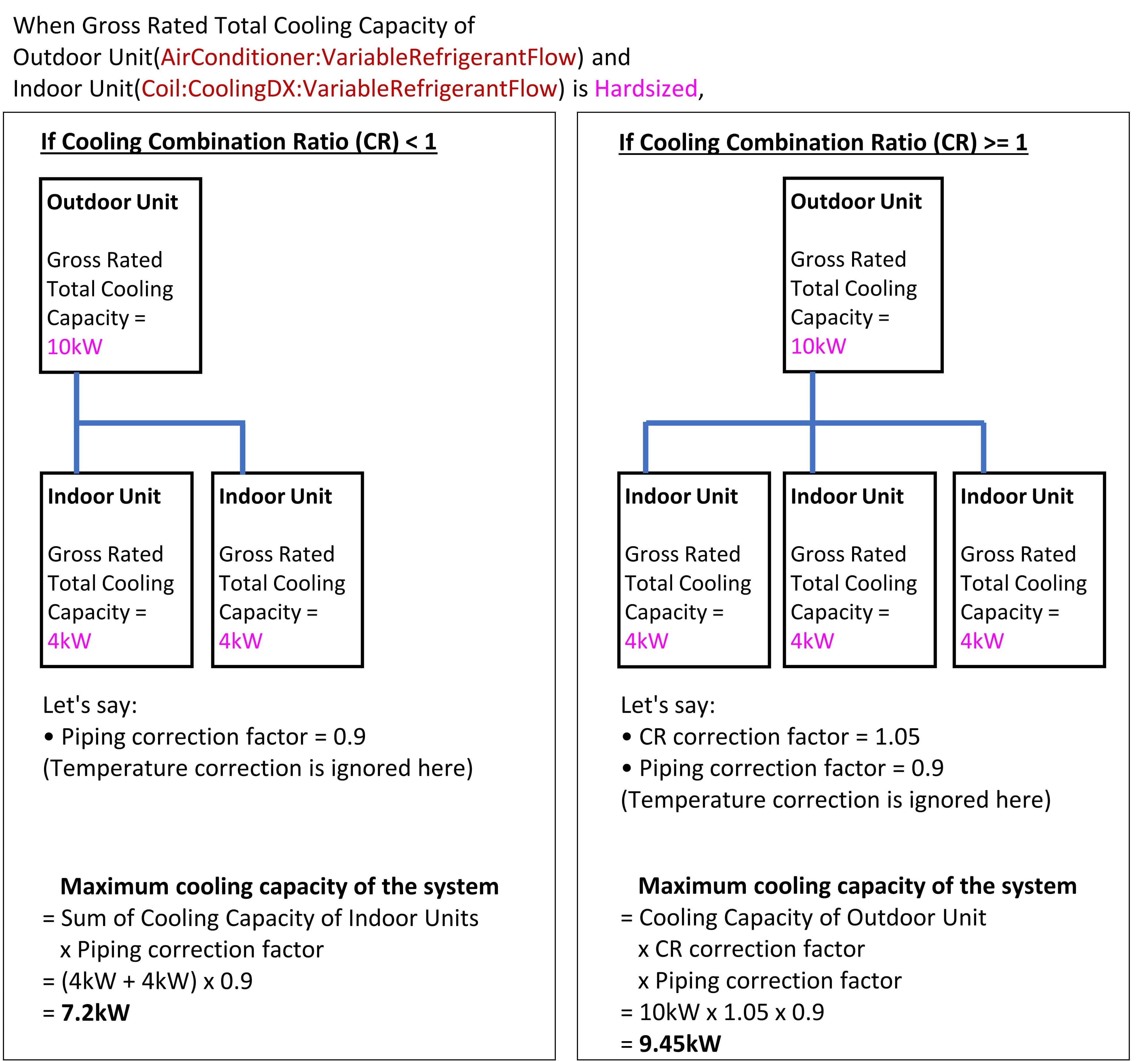Does Piping Correction Factor affect Hardsized cooling capacity of VRF?
This is a simple Yes or No question.
When we hardsizeGross Rated Total Cooling Capacity[W] in AirConditioner:VariableRefrigerantFlow, do Equivalent Piping Length used for Piping Correction Factor in Cooling Mode and Vertical Height used for Piping Correction Factor change the actual cooling capacity by correcting the hardsized Gross Rated Total Cooling Capacity? Or are they only relevant when Gross Rated Total Cooling Capacity is autosized?
For example, if Gross Rated Total Cooling Capacity is 10kW and Piping Correction Factor is 0.9, is the actual cooling capacity 10kW x 0.9 = 9kW? Or is it still 10kW?
Or to rephrase my question, when we hardsize Gross Rated Total Cooling Capacity[W] in AirConditioner:VariableRefrigerantFlow, should we input the cooling capacity taking into account the piping correction factor in advance? If the rated total cooling capacity on VRF product catalogue is 10kW and the piping correction factor that is manually calculated is 0.9, should we input 10kW x 0.9 = 9kW to Gross Rated Total Cooling Capacity?
P.S.
This postscript illustrates my interpretation of @rraustad 's answer. Could you please correct me if I'm wrong? I think the maximum cooling capacity of VRF system will be either Sum of the cooling capacity of indoor units or the Maximum cooling capacity of outdoor unit.
If sum of the cooling capacity of indoor units is smaller than the cooling capacity of outdoor unit, which means Combination Ratio (CR) is less than 1, then the maximum cooling capacity of the VRF system is sum of the cooling capacity of indoor units multiplied by Piping correction factor.
If sum of the cooling capacity of indoor units is larger than the cooling capacity of outdoor unit, which means Combination Ratio (CR) is more than 1, then the maximum cooling capacity of the VRF system is the cooling capacity of the outdoor unit multiplied by CR correction factor and Piping correction factor.






